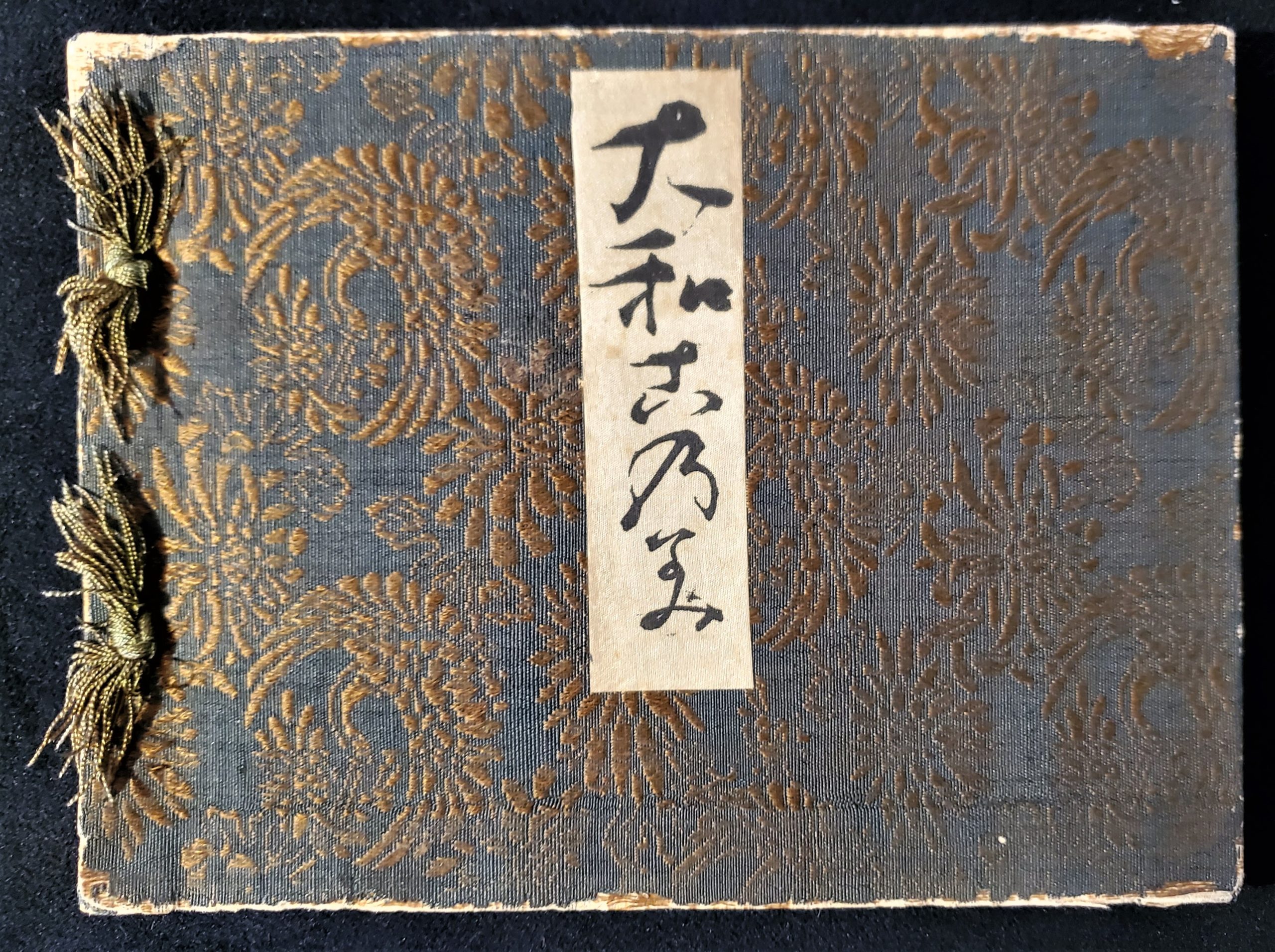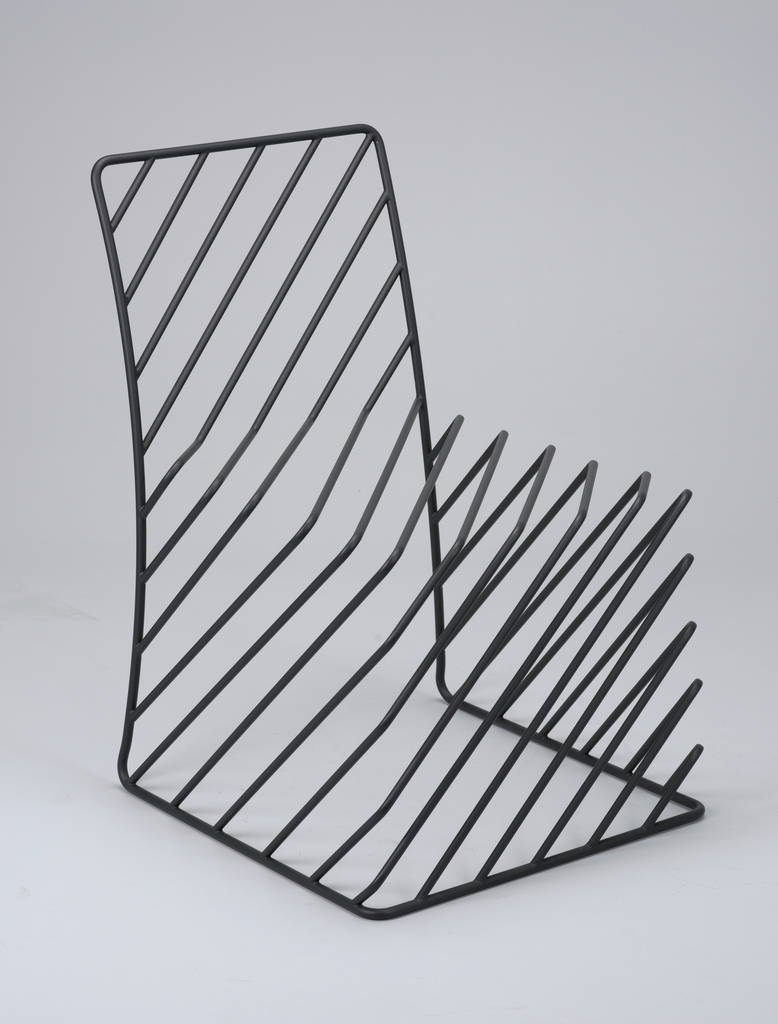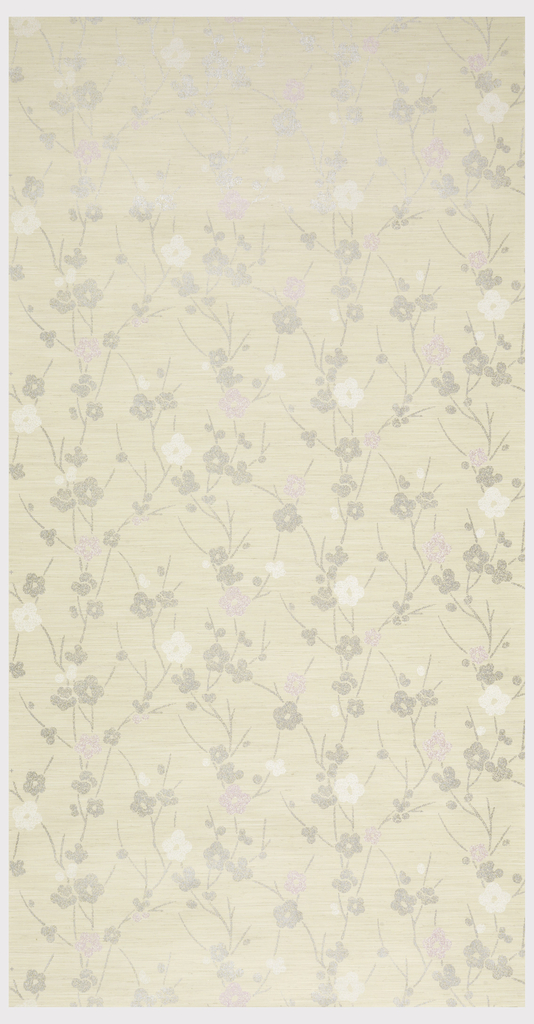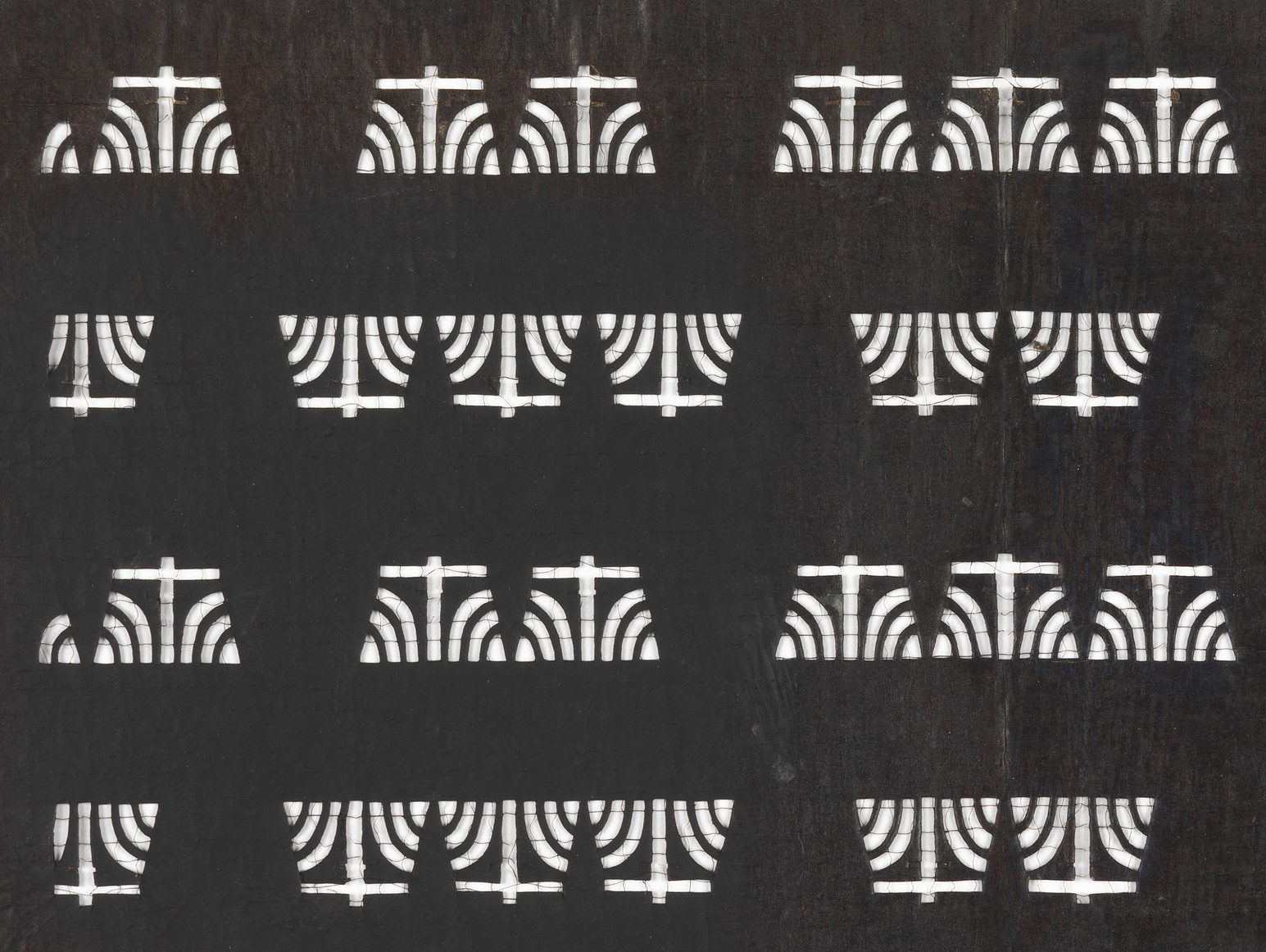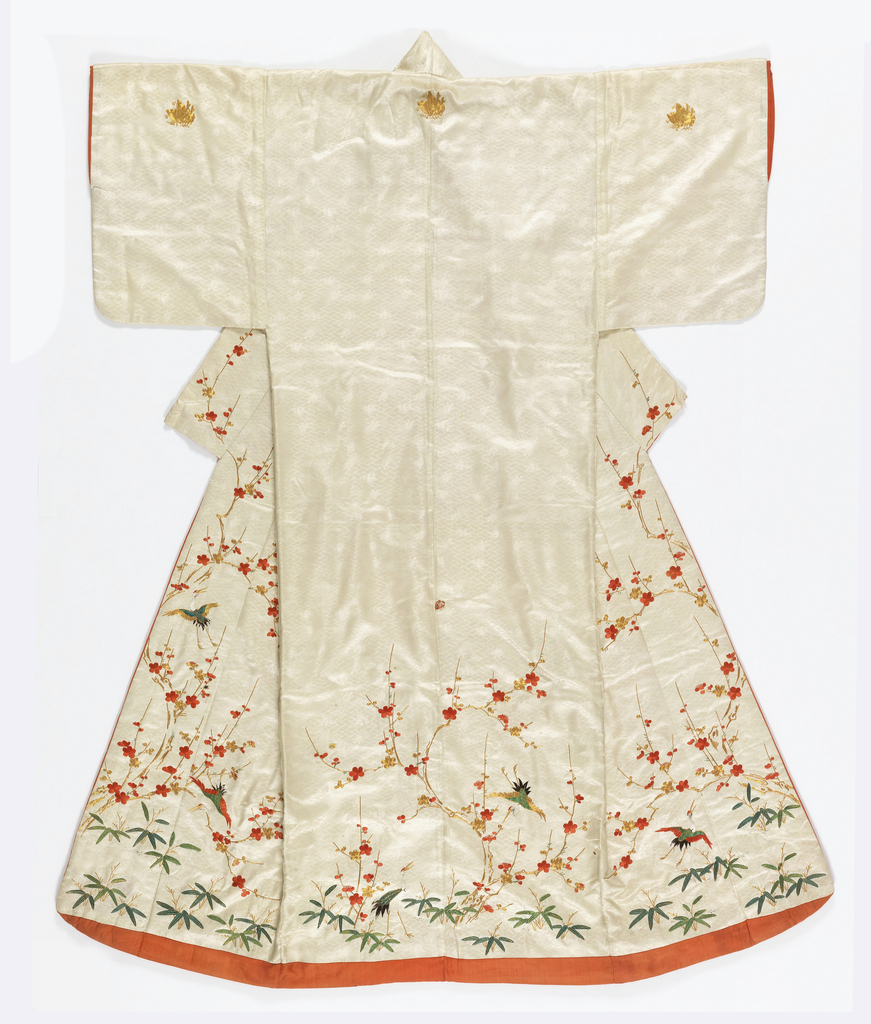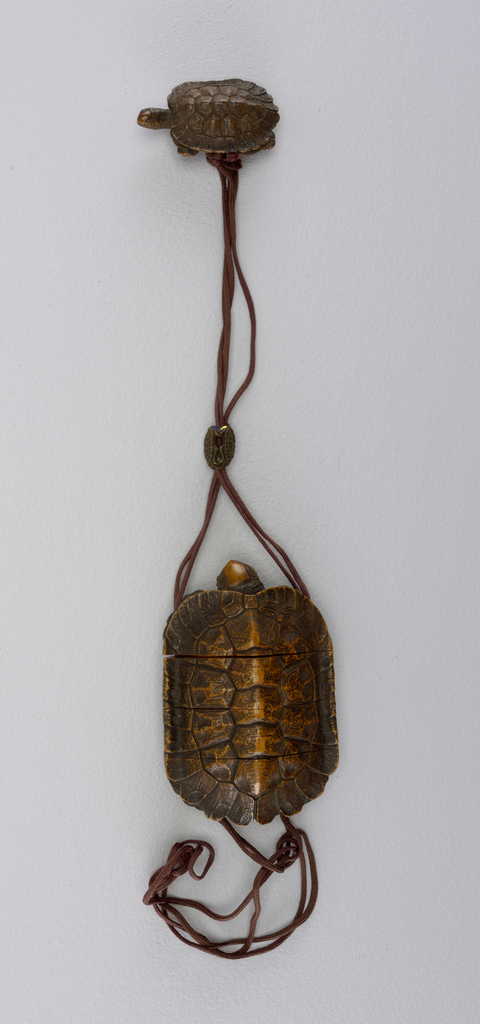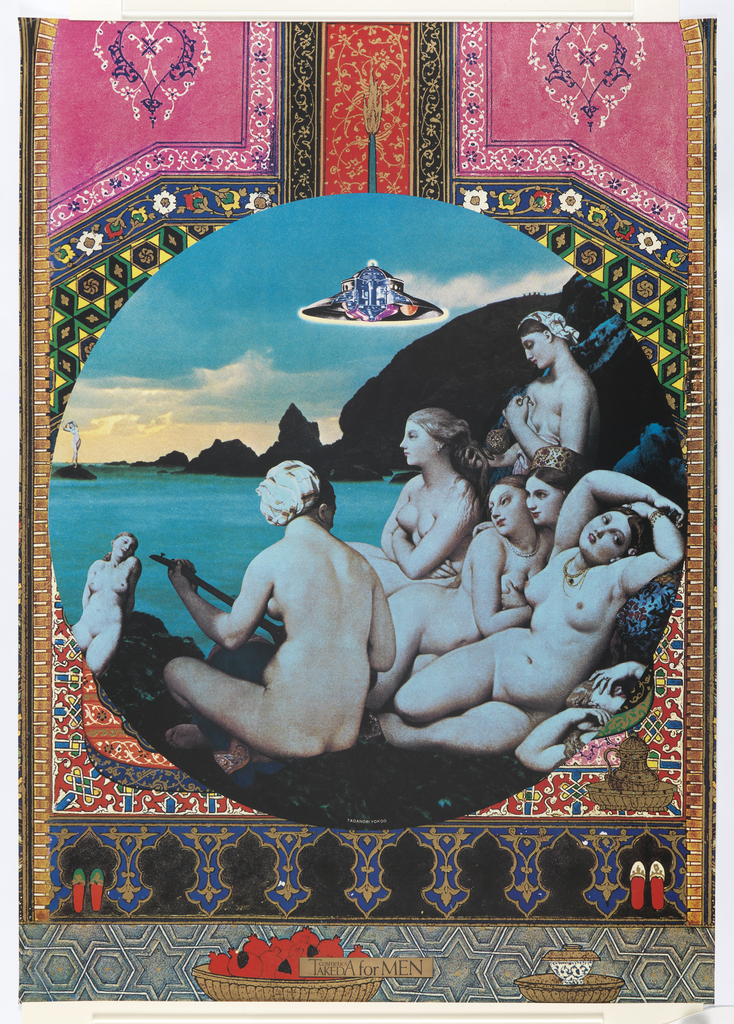This 1905 furniture trade catalog in the Cooper Hewitt Design Library is from the renowned Japanese art and antiques firm of Yamanaka & Co. Covered in silk brocade and bound with silk threads according to the ancient Japanese bookbinding technique of Yotsume Toji or stab-binding, it contains 36 photographic plates of elaborately carved, gilded,...
Not every chair immediately presents itself as a chair. Pared down to its basic components, this chair is a study in outline and form. It was part of design firm nendo’s first solo exhibition in England, at the Saatchi Gallery in 2010. Responding to the exhibition theme, “Outlines”, nendo created the Thin Black Lines series of...
Lithe and resplendent, a maze of branches weaves its way across the composition of this lightly colored fusuma paper. In Japan, fusuma are sliding panels that can serve as walls or doors inside the home. Scattered along each bough are a multitude of delicately rendered flowers whose petals invite the eye to linger on their...
In the traditional Japanese craft of katagami, paper stencils are carved by master artisans for use in decorating textiles. Documented since at least the sixteenth century, the technique developed out of methods originally devised for embellishing leather armor. Some common katagami motifs record this history: the stylized iris pattern that appears on this stencil symbolizes bravery....
Author: Andrea Aranow In celebration of the third annual New York Textile Month, members of the Textile Society of America will author Object of the Day for the month of September. A non-profit professional organization of scholars, educators, and artists in the field of textiles, TSA provides an international forum for the exchange and dissemination...
Author: Janine LeBlanc In celebration of the third annual New York Textile Month, members of the Textile Society of America will author Object of the Day for the month of September. A non-profit professional organization of scholars, educators, and artists in the field of textiles, TSA provides an international forum for the exchange and dissemination...
Turtle-shaped and strung with carved toggles and cord, this object instantly piques the curiosity of the viewer. The diminutive lacquered wood sculpture is, in fact, a Japanese container, referred to as an inrō, which is composed of separate compartments and held together with a cord. These small containers were often used as medicine boxes, containing...
In last month’s Short Story, we attended the weddings of Hewitt sister Amy Hewitt Green and that of her daughter Eleanor Margaret Green, who became Princess Viggo of Denmark. This month, researcher Josephine Rodgers discusses the introduction of American drawing into Cooper Hewitt’s collection through the work of Robert Frederick Blum. Margery Masinter, Trustee, Cooper...
“One of my motives for becoming a graphic designer,” said the Japanese designer, Tadanori Yokoo, “was to make tourist posters. As a result, all my pieces end up looking like tourist posters. The only thing is that these posters are about places that don’t exist on earth. They may be about a lost paradise.”[1] Tadanori...
